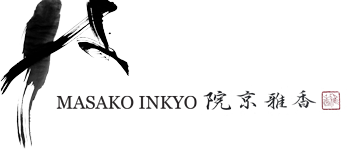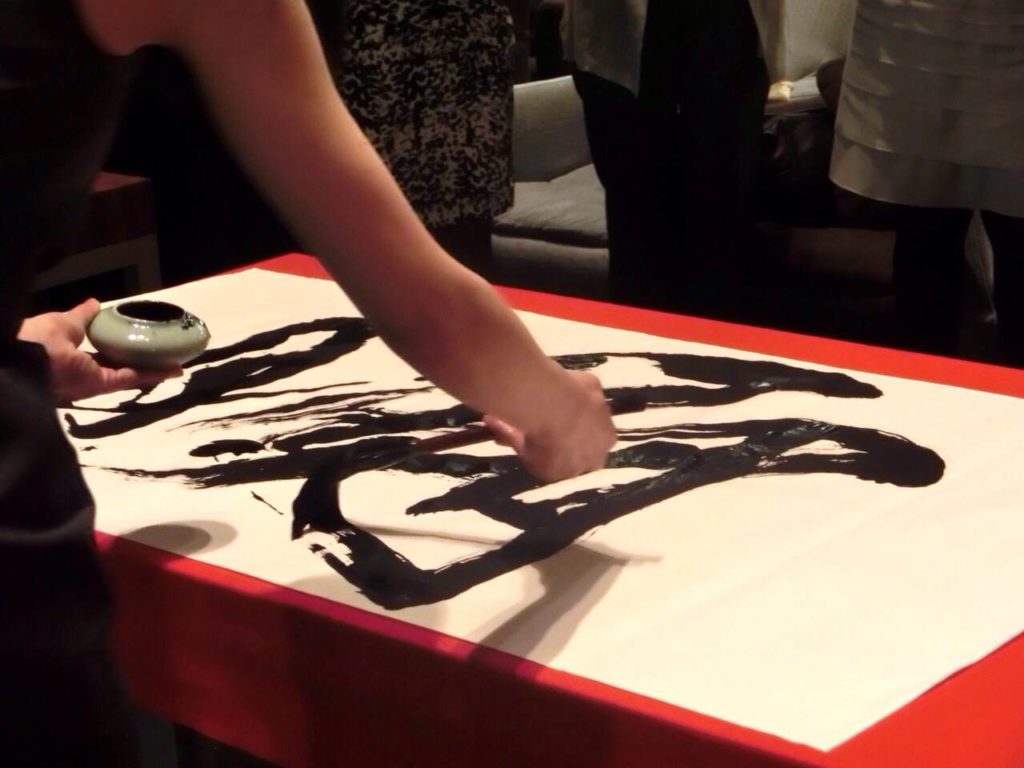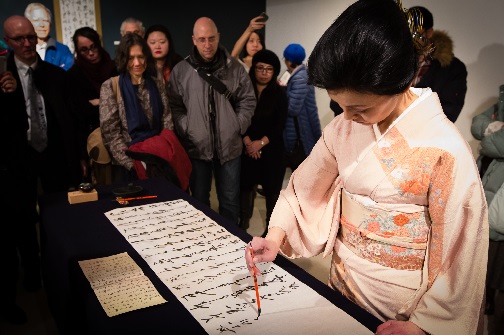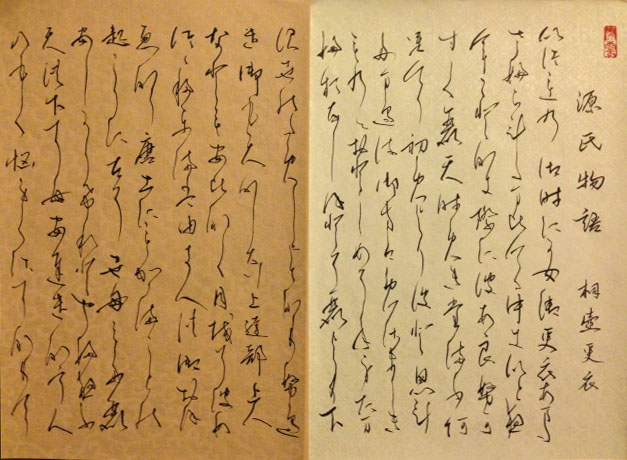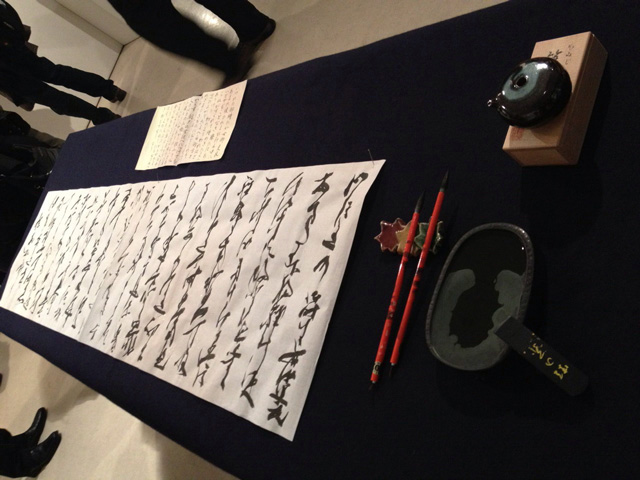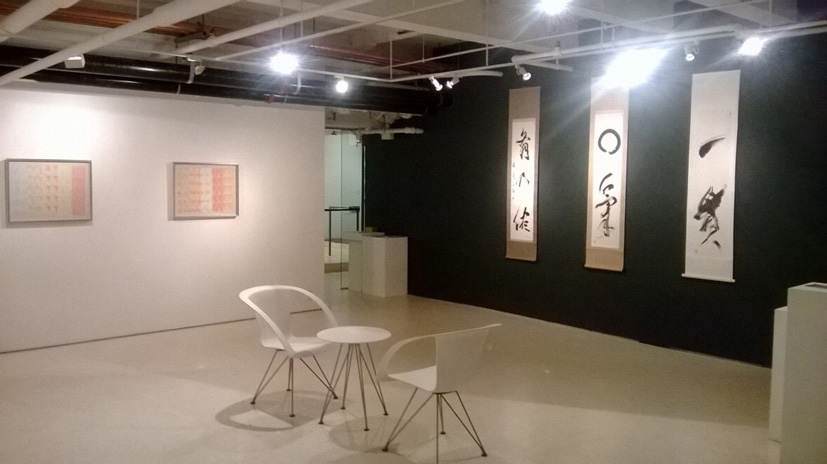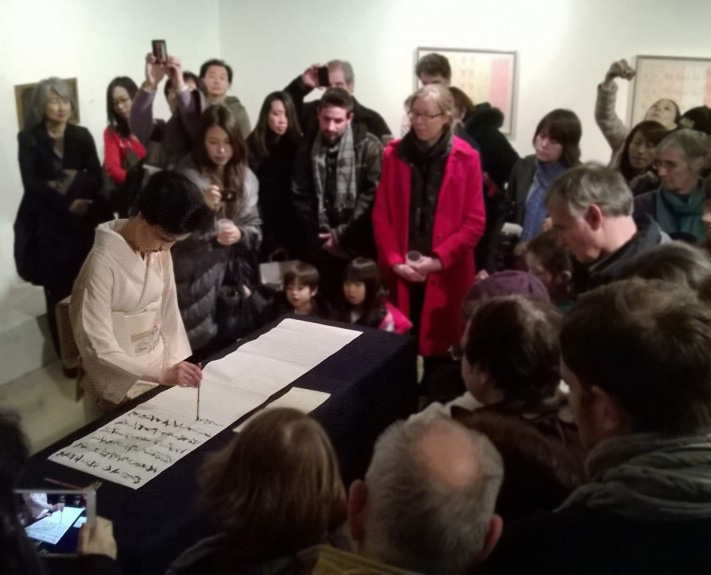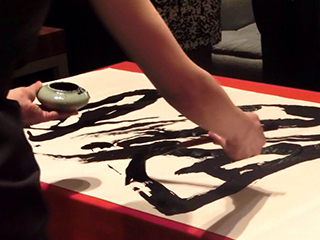
Artist in Hotel
PARK HOTEL TOKYO, JAPAN
— The Park Hotel Tokyo, in December 2012, started the “Artist in Hotel” project where an artist decorates an entire guest rooms. All the guest rooms on the 31st floor will be so decorated. For my performance I reproduced one of the pieces I created for the Artist Room “One Hundred Poems by Masako Inkyo.”
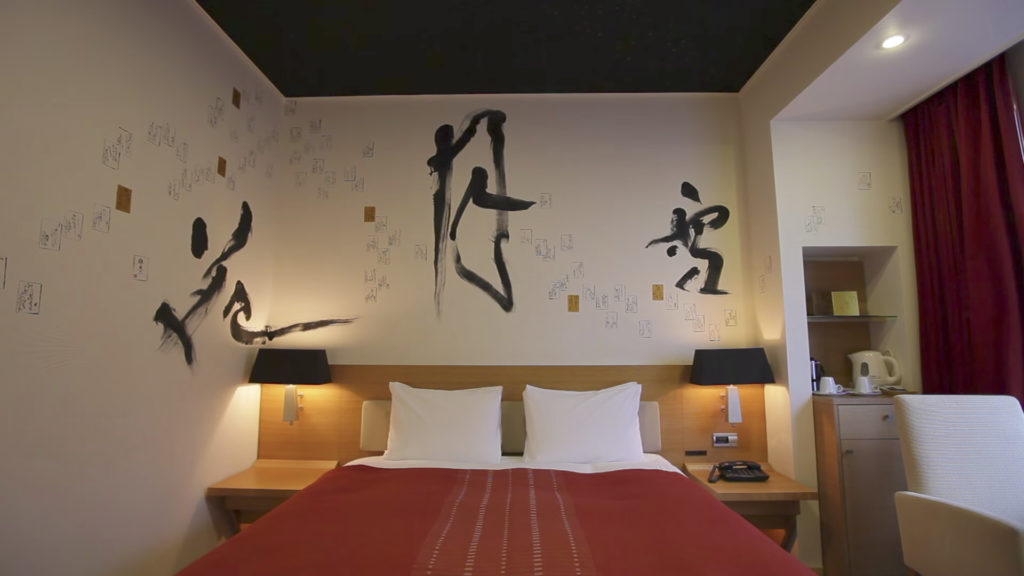
Testimonial
“The truth is, hiragana really has this kind of freedom.” It was as though this thought physically struck me in the back of the head the first time I saw the room she created. This was at the very beginning of the “Artist in Hotel” project to, basically, turn hotel rooms into works of art, putting words and images directly onto their walls and ceilings. We had no idea how it would turn out and were desperately looking for artists who had the ability to undertake this challenge. It was during this time that I was brought together with Master Inkyo. She presented an innovative plan.
First, treat the walls as folding screens. Then, have a Milky Way of kana flow across the sky along with clouds pouring down rain of one hundred poems from one hundred poets. Across the front wall, the seasons would be represented by the classic Japanese word “Setsugekka”, meaning “snow, moon, flower”, which alludes to the seasons. The overall theme would be the classic text “One Hundred Poets, One Hundred Poems” (Hyakunin Isshu). It was perfect for our goal of introducing the beauty of Japan to visitors from other countries. This is how the room was transformed into a beautiful art space.
There is nothing else I can say about it. The delicacy and strength of the writings and their beauty backed up by such technical skill. Even if written vertically on the walls, her writing loses none of its power. I truly thank you, Master Inkyo. It is my hope to share your work with many guests.”
Hotel Manager, Park Hotel Tokyo
